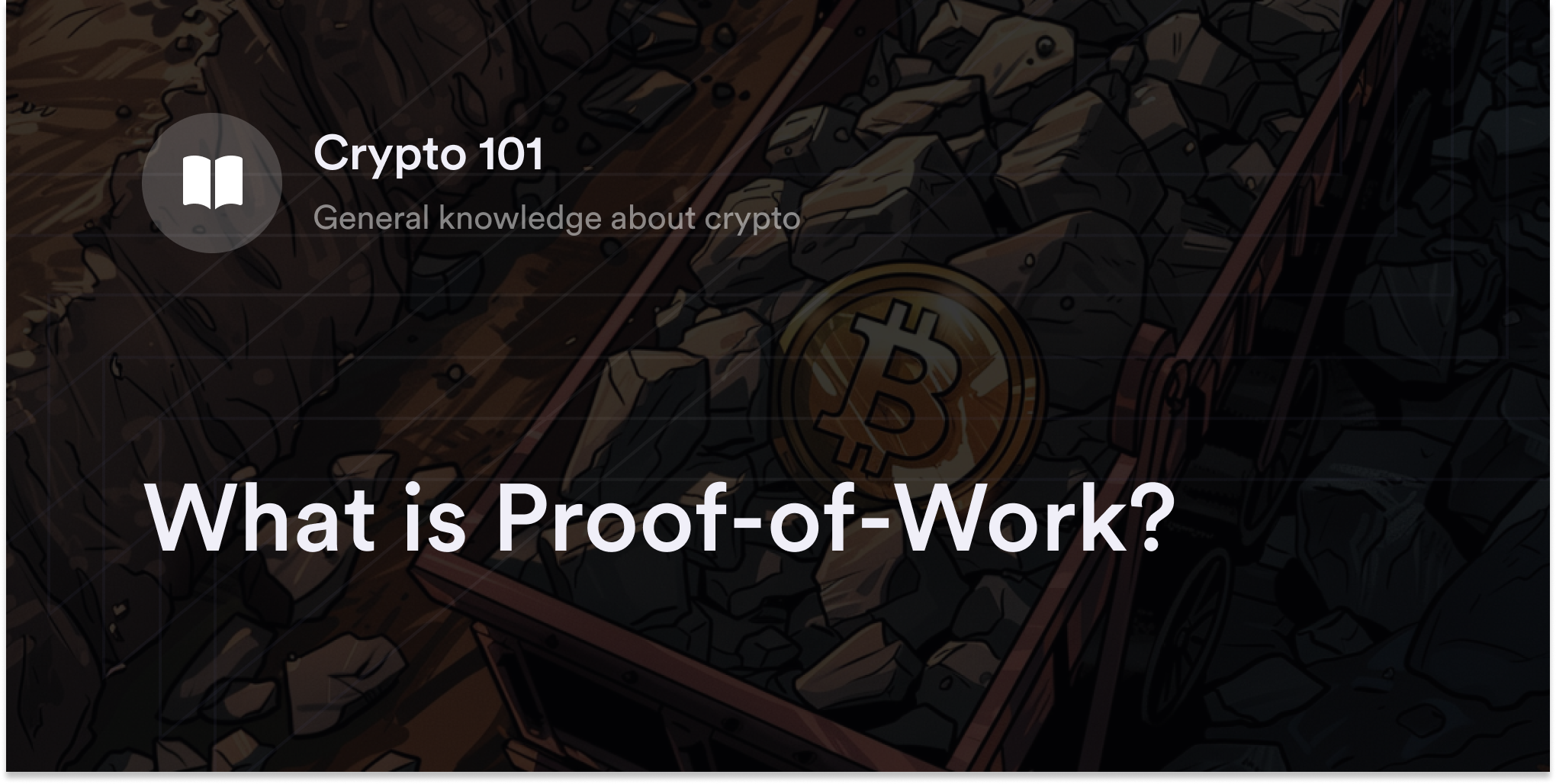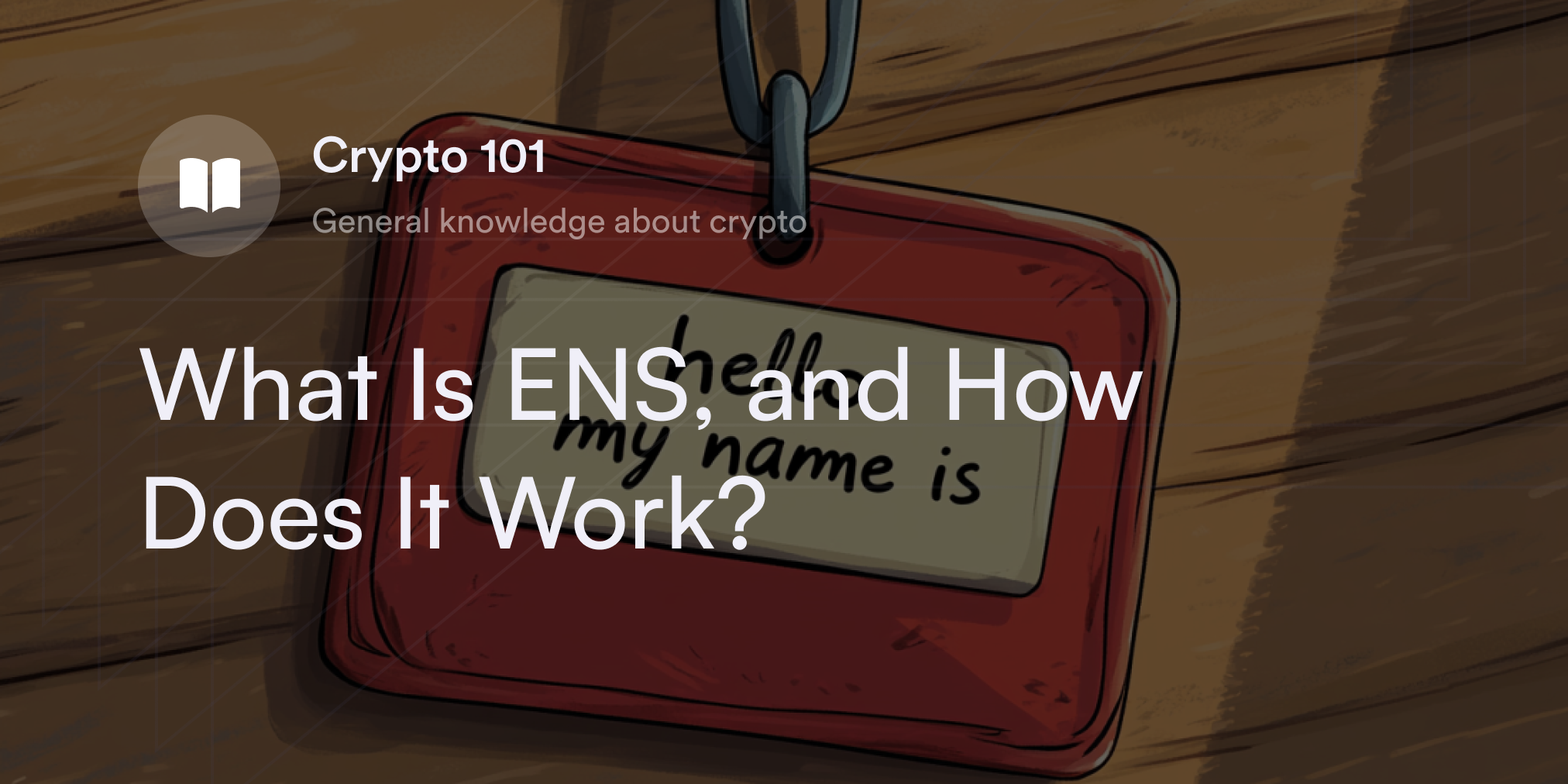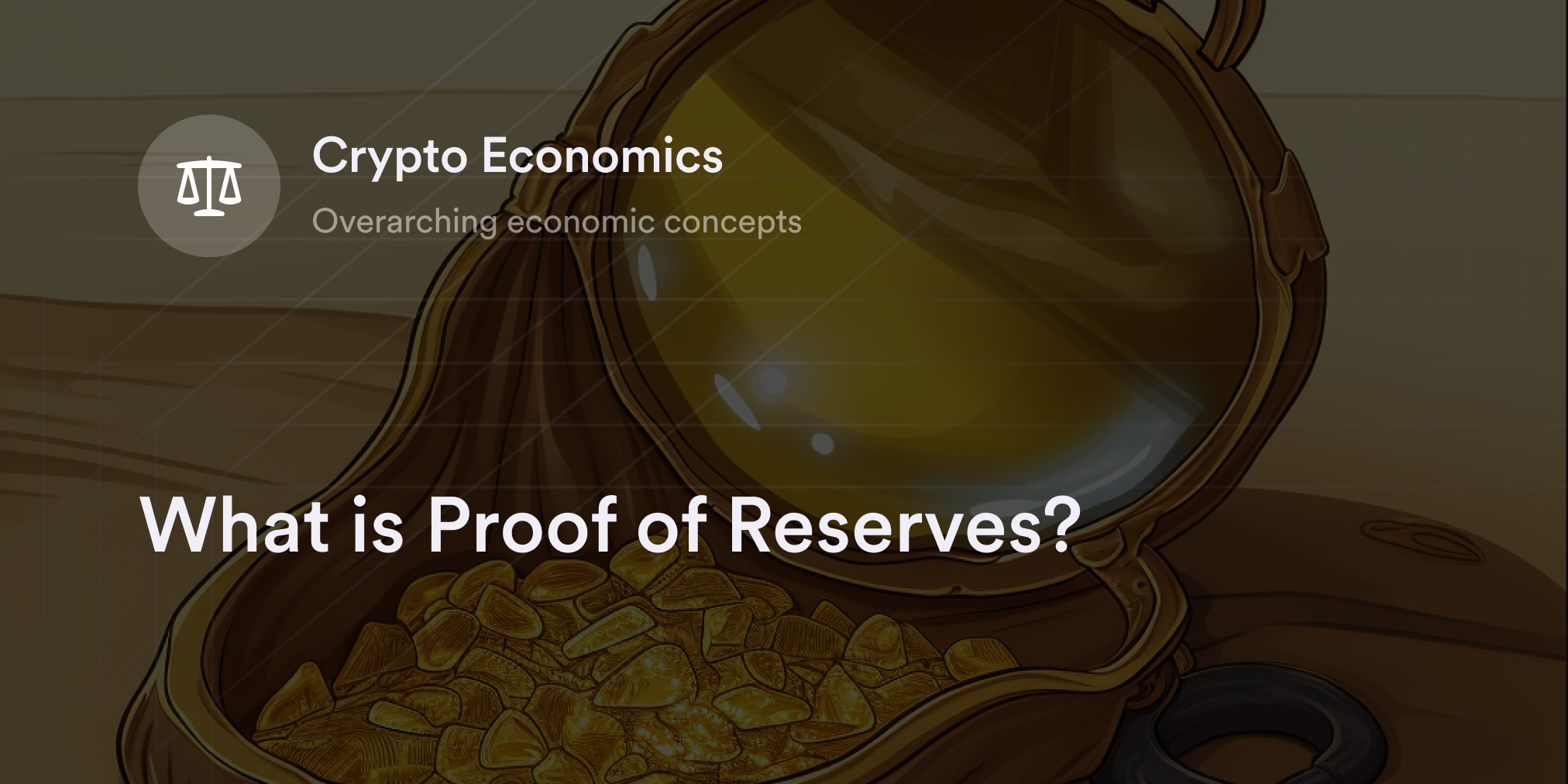


Cryptocurrency’s launch raised eyebrows, garnering both optimism and pessimism, but Bitcoin (BTC) proved decentralized digital currencies are not only possible but can also be successful. This was just the start of a broader crypto movement known as “decentralized finance” (DeFi).
Since 2020, billions of dollars have entered the DeFi ecosystem, and countless developers are working on innovative DeFi applications. As DeFi goes mainstream, traders and investors continue to explore the potential benefits of this revolutionary field.
Learn what “decentralized finance” is, why it's one of the largest segments of the crypto economy, and how new crypto traders can get involved.
What is Decentralized Finance?
DeFi uses blockchain technology to automate web-based financial services, eliminating the need for liaisons such as banks or centralized exchanges (CEXs) to verify crypto transfers. Instead of relying on intermediaries, true DeFi applications let anyone make pseudonymous peer-to-peer (P2P) transfers with their crypto wallets. Blockchains use decentralized networks of computers (aka “nodes”) to validate crypto transactions.
Without central governance, DeFi solutions may offer the same products and services as traditional institutions such as banks or trading platforms. For instance, investors trade P2P crypto derivatives on decentralized crypto exchanges (DEXs), such as dYdX. Alternatively, DeFi users can link their wallets to a lending site such as Aave to take out crypto loans. All the transactions in true DeFi protocols are transparent on their respective blockchains, and users might not have to submit sensitive personal information such as their name, home address, or credit score to access decentralized applications (dApps).
DeFi dApps rely heavily on self-executing “smart contracts” to record and process crypto transfers. First launched on Ethereum, smart contracts recognize conditions and process “if-then” commands on blockchain networks. For example, a smart contract on Aave “knows” when a crypto borrower pays off their loan. Once a smart contract registers that an Aave user made their final deposit, it automatically releases the crypto collateral on the platform.
Centralized vs. Decentralized Finance
The major difference between centralized finance (CeFi) and decentralized finance is that the former relies on intermediaries such as banks, brokers, and fintech companies to approve transactions. In the DeFi space, however, no third-party intermediaries verify crypto transfers. Instead, DeFi dApps rely on blockchains, smart contract technology, and crypto wallets to provide security, privacy, and financial opportunities.
Second, users might not need to submit sensitive information on a DeFi application. Instead, their crypto wallets prove “identity.” DeFi protocols automatically link and recognize each wallet address. If a holder has crypto in their account to use on a DeFi platform, they can take advantage of its services.
Types of Decentralized Finance Applications
Many DeFi applications mimic traditional financial services such as lending, borrowing, and trading. However, a few crypto-specific use cases in DeFi offer unique opportunities for crypto investors.
P2P crypto trading: DEXs are DeFi dApps offering P2P trading services for cryptocurrencies. These connect buyers with sellers of digital assets and facilitate trades between crypto wallets. dYdX, for example, allows traders to buy and sell crypto derivatives directly from a compatible crypto wallet. To expose investors to inaccessible assets, some DeFi platforms, such as Synthetix, are experimenting with trading digital representations of traditional assets, such as foreign currencies, stocks, and gold.
Stablecoins: Stablecoins are cryptocurrencies with a value linked to real-world assets such as the U.S. dollar. Because stablecoins aim to have a consistent “peg” to an established non-crypto asset, they’ve become a significant source of stability in the DeFi ecosystem. For example, dYdX introduces new traders to methods for instantly converting fiat currencies to stablecoin USDC for a convenient trading experience. The most widely used USD stablecoins––USDT and USDC––use a “reserve-backed system” in which the crypto’s issuer holds an equivalent amount of fiat to cover each stablecoin it issues.
Lending and borrowing: Some DeFi platforms let users lend crypto to earn interest or deposit crypto collateral to take out a loan. Similar to traditional loans, crypto loans require borrowers to pay back the initial sum plus interest. However, smart contracts record and transfer all the digital currencies used on crypto lending sites like Aave, thus removing third parties from the equation.
Fees from liquidity pools: Liquidity pools are smart contracts that store cryptocurrency on a DeFi protocol, especially DEXs. Investors deposit funds from their crypto wallets into liquidity pools to earn a portion of trading fees for every crypto transfer. For example, if someone deposits Ethereum (ETH) and USDC into an ETH:USDC liquidity pool, they’ll receive a percentage of crypto fees each time DEX users swap between ETH and USDC.
Crypto staking services: “Staking” is a reward mechanism used on blockchains with a proof-of-stake (PoS) consensus algorithm. In a PoS system, anyone who wants to validate crypto transactions needs to lock (aka “stake”) crypto on a blockchain to earn “staking” rewards paid in the chain’s native cryptocurrency. For instance, validators on Ethereum stake a minimum of 32 ETH to secure the network and earn ETH. There are many DeFi protocols, such as Lido Finance, where users deposit crypto to earn incentives, even if they don’t have the minimum requirement to become a validator.
Disadvantages and Advantages of Decentralized Finance
DeFi is an exciting segment of the crypto economy, but new users should be aware of the drawbacks. Investors must weigh the benefits against potential risks before diving into DeFi applications.
Advantages
Accessibility: Users with a stable internet connection and a crypto wallet can access DeFi applications. There’s no need to prove creditworthiness or submit lengthy paperwork to apply for loans or trade crypto in DeFi, which helps unbanked or underbanked investors easily access financial resources.
Transparency: Every transaction on a true DeFi protocol appears on a blockchain’s payment ledger, ensuring visibility. Also, DeFi platforms such as dYdX publish open-source code so users can review the protocol’s legitimacy.
Anonymity: Although all transactions on blockchains are transparent, no names are attached to specific wallet addresses. Plus, since people don’t need to submit their names or emails to join DeFi sites, they enjoy greater privacy than traditional financial services.
Self-custody: Traders never relinquish control over their crypto when using DeFi services. Because all DeFi dApps connect to crypto wallets, they offer secure and seamless P2P transfers.
Community governance: Some DeFi platforms offer cryptocurrencies called “governance tokens” that give holders the right to vote on upcoming proposals. These cryptocurrencies grant dApp users a say in the future of their favorite DeFi projects.
Access to novel passive income streams: DeFi platforms offer crypto investors new passive income opportunities such as staking and liquidity pools. Although earning yield in DeFi isn’t risk-free, it gives crypto holders more options to use their coins and tokens in Web3.
Disadvantages
Security concerns: Since each DeFi application relies on smart contracts, users must trust their platform code’s security. Currently, DeFi isn’t as regulated as centralized markets, so many scammers and hackers have exploited poorly written smart contract codes and drained crypto from DeFi sites.
Lack of insurance protections: Because cryptocurrencies are on decentralized networks, they don’t qualify for federal or institutional insurance protections. If people lose crypto in a hack, there’s no guarantee they’ll get their money back. Although some platforms, such as dYdX, have insurance protections, not every DeFi protocol promises to help users after a cyberattack.
Higher learning curve: The user interface and experience (UI/UX) on DeFi platforms aren’t as intuitive as on CEXs or centralized fintech apps such as PayPal. People who’ve never transferred crypto or downloaded a digital wallet need extra time and education to use DeFi sites.
How to start using DeFi
If you’re interested in experimenting with DeFi, download a crypto wallet compatible with a DeFi dApp. dYdX, for instance, works with wallets such as MetaMask, Trust Wallet, and Coinbase Wallet. Remember to check the supported wallets on DeFi platforms and review each crypto wallet to find one with a high reputation for security.
After downloading a crypto wallet, fund the wallet with crypto. Transfer crypto from a CEX account to a wallet address or purchase it directly. Some wallets, such as MetaMask, let you use a debit or credit card to buy ETH. If you’re transferring crypto from a CEX to a wallet, check if the recipient’s crypto address matches the desired crypto (an Ethereum address for Ethereum, a Solana address for Solana, a Cardano address for Cardano, etc.). Since cryptocurrencies are on different blockchains, each crypto asset has a unique wallet address, so sending crypto to the wrong address will result in lost funds.
After you have crypto in a digital wallet, link the wallet to a supported DeFi platform. Typically, DeFi dApps have a “Connect Wallet” button in the top right-hand corner of their homepage. After clicking this tab, choose a compatible crypto wallet, link the account, and start using a DeFi site’s services.
Experience Decentralized Crypto Trading on dYdX
Since our founding in 2017, dYdX has become a leader in decentralized crypto derivatives trading. We allow anyone with a compatible crypto wallet to access fee-free crypto perpetuals for Bitcoin and altcoins with up to 20x leverage.
Check out our blog and academy to learn more about us and the crypto universe. Start trading on dYdX today!
Disclaimer
The content of this article (the “Article”) is provided for general informational purposes only. Reference to any specific strategy, technique, product, service, or entity does not constitute an endorsement or recommendation by dYdX Trading Inc., or any affiliate, agent, or representative thereof (“dYdX”). Use of strategies, techniques, products or services referenced in this Article may involve material risks, including the risk of financial losses arising from the volatility, operational loss, or nonconsensual liquidation of digital assets. The content of this Article does not constitute, and should not be considered, construed, or relied upon as, financial advice, legal advice, tax advice, investment advice, or advice of any other nature; and the content of this Article is not an offer, solicitation or call to action to make any investment, or purchase any crypto asset, of any kind. dYdX makes no representation, assurance or guarantee as to the accuracy, completeness, timeliness, suitability, or validity of any information in this Article or any third-party website that may be linked to it. You are solely responsible for conducting independent research, performing due diligence, and/or seeking advice from a professional advisor prior to taking any financial, tax, legal, or investment action.
You may only use the dYdX Services in compliance with the dYdX Terms of Use available here, including the geographic restrictions therein.
Any applicable sponsorship in connection with this Article will be disclosed, and any reference to a sponsor in this Article is for disclosure purposes, or informational in nature, and in any event is not a call to action to make an investment, acquire a service or product, or purchase crypto assets. This Article does not offer the purchase or sale of any financial instruments or related services.
By accessing this Article and taking any action in connection with the information contained in this Article, you agree that dYdX is not responsible, directly or indirectly, for any errors, omissions, or delays related to this Article, or any damage, injury, or loss incurred in connection with use of or reliance on the content of this Article, including any specific strategy, technique, product, service, or entity that may be referenced in the Article.







